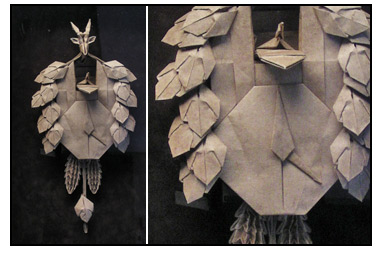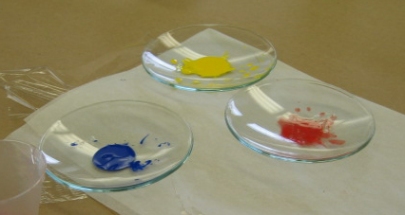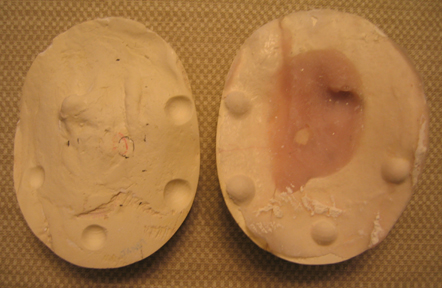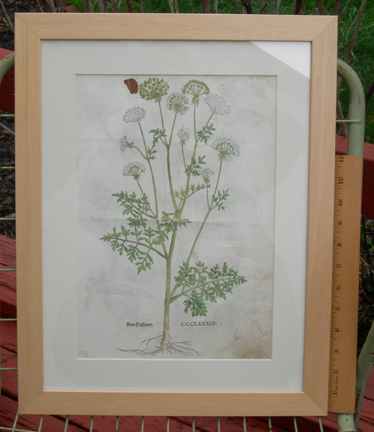
Robert J. Lang, one of the top origami artists in the world, is well known for his highly realistic and elegant designs in natural subjects. Unlike many other origami artists, he is also a scientist with an extensive engineering background. Over the years, Robert Lang has published many of his design patterns in origami books. His more recent 500+ page publication “Origami Design Secrets” is a serious book on the mathematical theories and underlying principles of origami design. Here, Robert Lang shares his experience as both an origami artist and a scientist.
me: “Tell me a little bit about your background in both science and art.”
Robert Lang: “Science-wise, I’ve always been interested in natural history (a love that arose from a childhood of tramping through the woods, playing in the creek, and collecting plants and animals). In high school I became interested in mathematics through books and articles by Martin Gardner. For college, I went to Caltech on the advice of a hiking buddy, and, once there, cycled my major interest through mathematics, computer science, and eventually settled into Electrical Engineering for my BS. After getting my MS from Stanford (also in EE), an interest in lasers led me to Applied Physics, back at Caltech for my PhD. This then led into a career in lasers and optoelectronics, first at NASA/JPL, and then for 9+ years at Spectra Diode Laboratories, a Silicon Valley company that developed and manufactured semiconductor lasers.”
“Artistically, as a child I was interested in various crafts which I took up and abandoned (sometimes several times), but I’ve never really had any formal artistic training. But after folding representational figures for 40-odd years (and drawing tens of thousands of diagrams of same), I’ve started to get a little bit of an eye for form.”
me: “What was your first experience with origami like?”
Robert Lang: “My first experience happened when I was 6 years old, so I don’t remember it all that well. A teacher gave me a book that had some folding instructions in it. I saw it as a fun puzzle to try to work out. I do remember that origami seemed like a great way to make toys from free materials, i.e., scrap paper.”
me: “When did you begin designing your own origami compositions?”
Robert Lang: “It’s always hard to draw the line between “modifying an existing design” and “designing one’s own composition.” Certainly I tried modifying the designs I was folding from my books almost immediately. But I would guess that by my early teens I was coming up with my own figures.”
me: “Can you summarize the general steps you take to design a new piece of work?”
Robert Lang: “It varies a lot, depending on whether the figure is simple or complex. For a complex figure, I try to break down the subject into its component parts, figure out how to attack the individual parts, and figure out how they’ll all interact with each other in the overall design.”
me: “How has the process of designing your work refined over the years?”
Robert Lang: “When I started out, I designed origami the way most people did: somewhat by trial and error. Over time, I built up a collection of techniques for solving individual problems: how do you turn a flap into a leg, or how do you make a rounded shape. Eventually, I began to recognize common principles that lay behind many different techniques, which allowed me to construct my own techniques; and even later, I figured out how to describe those principles mathematically, which led to further design advances.”
me: “Do you make everything out of one sheet of square paper?”
Robert Lang: “Certainly not! There are many genres of origami, including modular origami (many identical units from multiple sheets, such as my K2), composite origami (different parts of the subject from different sheets, such as my Orchid), and different shapes (such as my recent pots, which are from regular N-sided polygons). I fold in all genres, but probably 80-90% of what I do is from a single square, what is called in Japanese, fu-setsu sei-hokkei ichi-mai ori.”




Above: “Orchid,” “K2,” and “Allosaurus Skeleton” (side and front views) are examples of origami that are not made from a single sheet of square paper.
me: “Why do you choose to make natural subjects more often than objects and geometric shapes?”
Robert Lang: “Nature, and natural subjects, inspire an emotional response that objects don’t. When I’ve folding an animal, I’m not trying to create a photograph of the animal; I’m trying to create an emotional response in the observer that is the same response I feel when I see the actual subject. So while I’ve done plenty of geometrics and objects, the subjects I get passionate about are natural.

me: “Which designs and books by you are you most proud of and why?”
Robert Lang: “The book I am most proud of is Origami Design Secrets. The part of origami that I find most satisfying is creating a new figure, and by teaching people how to design, ODS allows others to experience that same rush.”
“As far as origami designs, usually one of my most recent ones is the one I’m most proud of! At the moment, that would probably be my Barn Owl, opus 508.”


me: “In your opinion, how does origami contribute to the field of technology, mathematics, or other types of science?”
Robert Lang: “There is a general contribution in that I think that origami exercises the parts of the mind that are often used in technology, mathematics, and other types of science. But it has also turned out that many origami structures have been found to be useful in technology in fields ranging from medicine to space exploration.”
me: “How does your background in science help you develop your works in origami and vice versa?”
Robert Lang: “There is a principle in science, most famously expressed by Newton: ‘we stand on the shoulders of giants.’ I like to put it a little bit differently: ‘the secret to productivity is letting dead people do your work for you.’ Meaning, if you can figure out how to relate your problem to an unrelated problem that someone else has already solved, you can make use of their results to advance your own endeavor. By casting certain origami problems into mathematical form, I’ve been able to make use of existing solutions to those mathematical problems, and thus advance my origami artwork.”
“So in that way, science has aided my origami. Now, the reverse direction is less clear-cut; I can’t point to a specific way that origami has assisted my work on lasers and optoelectronics. However, I would say that a lifetime of visualizing complex 2-D surfaces (in origami) has been good practice for visualizing the optical fields, electronic wavefunctions, and complex functional forms that arise in theoretical laser physics. I am pretty good at mathematical analysis, but I have always visualized mathematical concepts as physical shapes and surfaces. So while origami may not have contributed directly to my work in those fields, it kept my primary instrument well-exercised.”
me: “Is it common within the field of origami to have an extensive science background? If not, do you feel that it puts you in an advantage?”
Robert Lang: “There are other scientists in origami, to be sure: Brian Chan, one of the rising stars of American folding, is a mechanical engineering graduate student at MIT, for example. But internationally, most well-known origami artists are not scientists. In fact, perhaps not surprisingly, given origami’s growing status as an art, many of them are trained as general artists. As origami gains respectability within the wider artistic community, I would expect that more and more origami artists will come to origami with a mainstream art background.”
“For myself, though, my scientific training and approach has allowed me to accomplish artistic goals that I could not have accomplished otherwise. This is not to say that others couldn’t accomplish the same thing without science: just that, given my own mix of talents and limitations, my scientific talents have enabled me in some cases to overcome certain artistic limitations.”
Thanks to Robert Lang for sharing his thoughts and artworks. His website can be viewed at http://www.langorigami.com/index.php4. Here are a few more of my favorites (they can all be found on his website):































 “Visualizing Medicine: A Gallery Show by the Student Association of Medical Artists” exhibits some works from this year’s Biomedical Visualization students. The exhibit takes place in University of Illinois at Chicago’s Art Lounge at Student Center West from March 31, 2008 to May 2, 2008 and is open to the public. Please join us for a reception on April 3, 4pm to 7pm.
“Visualizing Medicine: A Gallery Show by the Student Association of Medical Artists” exhibits some works from this year’s Biomedical Visualization students. The exhibit takes place in University of Illinois at Chicago’s Art Lounge at Student Center West from March 31, 2008 to May 2, 2008 and is open to the public. Please join us for a reception on April 3, 4pm to 7pm.







